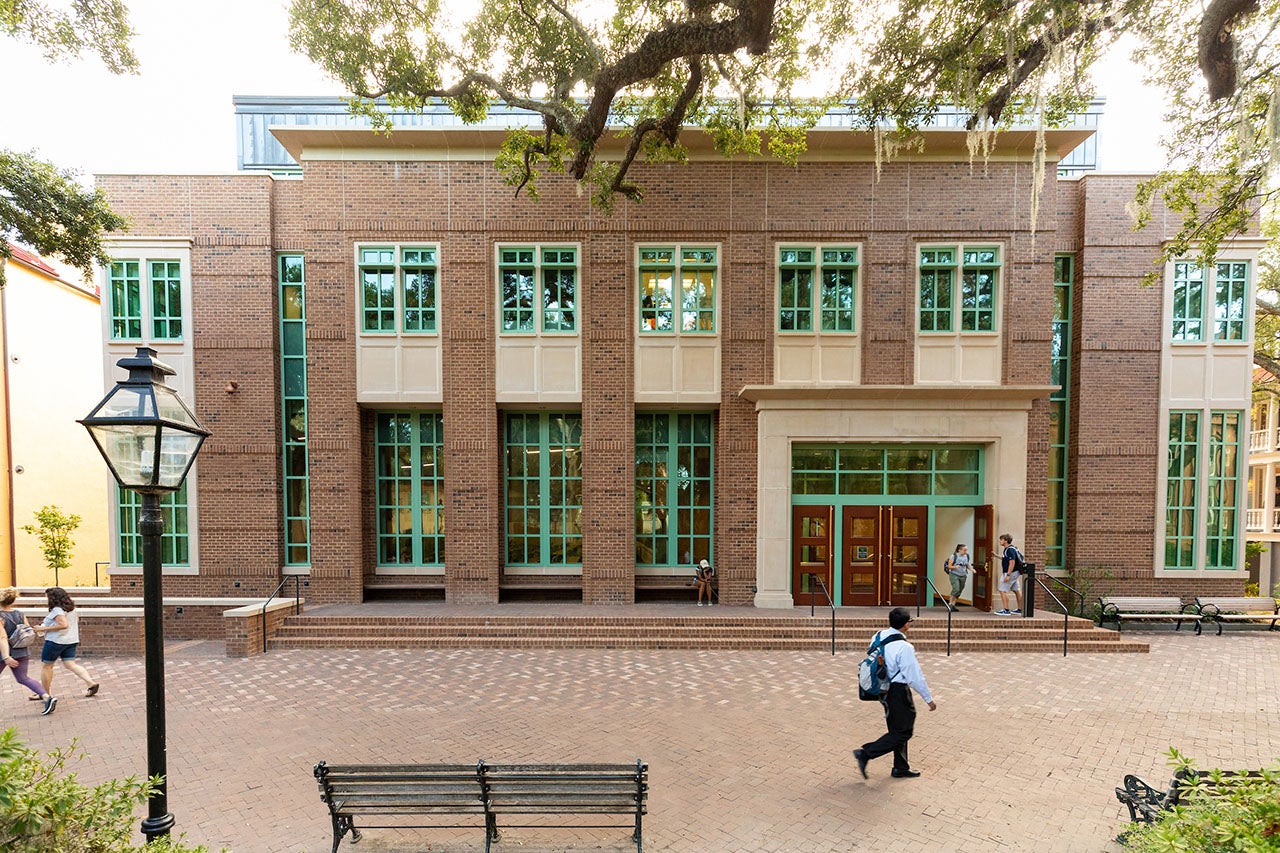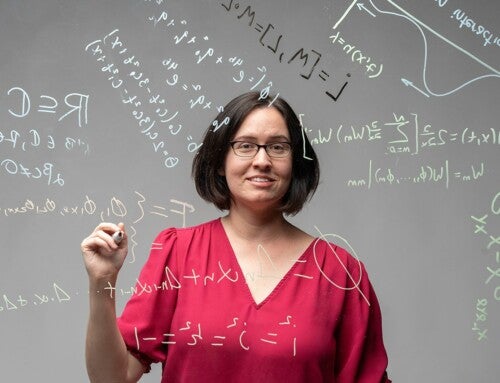You would expect Narayanan Kuthirummal, the professor and chair of the Department of Physics and Astronomy, to be excited about space, but lately he’s excited about a whole different kind of space: the 149,000 square feet inside the brand-new Rita Liddy Hollings Science Center, which just reopened after a four-year, $65 million renovation.
“There’s much more real physical space for both instruction and research,” he says, sitting behind his desk in his light-filled, contemporary-style office on the third floor. “There’s also more student space for them to sit and collaborate.”
Adds Seth Pritchard, professor and chair of the Department of Biology: “I am excited about the positive effect these dedicated student spaces will have on the sense of community experienced by our biology majors.”
Of course, science is all about the research, and with 27 student teaching labs, along with 34 faculty research labs, all with special gas, electrical and water lines – including emergency showers in the halls – that’s where the science center really shines. The labs will vastly improve the College’s ability to provide high-quality laboratory experiences in many different areas of the physical and biological sciences.
“Involving undergraduates in publishable research has always been one of the Department of Biology’s greatest strengths,” says Pritchard. “Improvements in quantity and quality of research laboratory space will lead to an even greater engagement of undergraduates in high-impact research projects, ultimately leading to additional publications in international peer-reviewed journals.”




“It’s a very special building,” says Kuthirummal. “Prospective students get excited about it, especially with all the open tubing and wires. They like the industrial, sci-fi look. However, we were just looking at saving money.”
Named for Rita Liddy Hollings ’57, the late wife of former U.S. Sen. Fritz Hollings, the original building was constructed in 1974, with a second phase added in 1987. Since the renovation began in 2013, faculty and students, including those in the Department of Psychology, have been spread out around seven different buildings on campus. About 9,000 students will use the new building annually.
“I am confident that the exercise advantage of walking a mile to Harbor Walk for classes was far outweighed by the inconvenience and time loss,” jokes Rebecca Brnich, a physics and astrophysics double major who hopes to work on new space missions after getting her Ph.D. “Since Rita has opened, we’ve seen a huge increase in the level of interaction among students and faculty, from freshmen to seniors, and this has enhanced communication and cohesion, learning and fun. The long wait for such an excellent facility has been more than worth it.”
You might say Brnich and her fellow astronomy students are over the moon, along with everyone else.
RITA BY THE NUMBERS
27 6-inch telescope mounts on the new observation deck for use in the astronomy lab as well as during monthly open houses.
1 24-inch PlaneWave telescope – the most powerful in the state – with a 2.25-times larger collecting area. A new fork mount isolated from the cement floor vastly mitigates building vibrations, which severely impacted the effectiveness of the previous telescope.
52 faculty and staff offices.
7 cutting-edge AV classrooms.
207-seat auditorium with a classroom partition that can seat 112 more.
7 digital displays throughout the building, allowing faculty and staff to inform students about special learning opportunities, events and important deadlines.
3 24-station computer labs.
2 Green Globes from the Green Building Initiative for its sustainable design features, such as a rainwater retention system and improved air quality.
Photos by Mike Ledford




